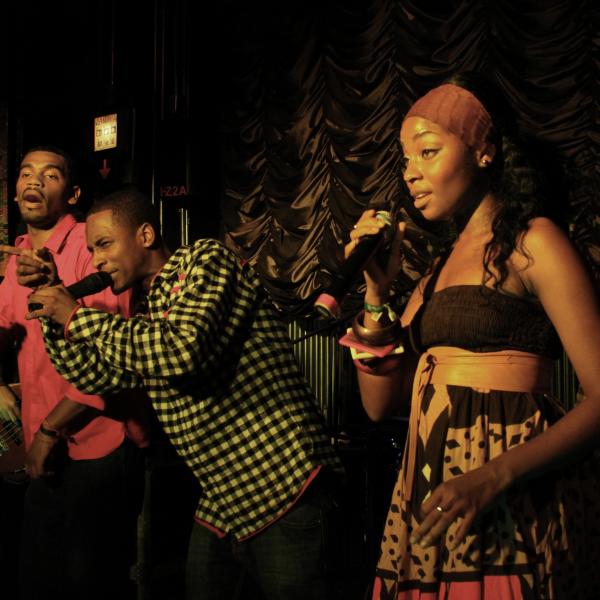The Rotunda of the U.S. Capitol is its physical and symbolic center, connecting the House of Representatives and Senate chambers and providing a setting for ceremonies such as presidential inaugurations and the lying in state of eminent persons. Scholar of early American literature Abram Van Engen tells the story of four historic paintings on display there and asks who and what they omit.
In the 1830s, a wave of anti-immigrant and anti-Catholic fervor struck the nation. At roughly the same time, Andrew Jackson began a ruthless campaign of Indian Removal, continuing years of political and cultural attempts to erase Native American presences, while slavery spread its horrors both in the nation and beyond its borders. It was at this moment, in 1836, that four paintings were commissioned for the U.S. Capitol Rotunda. All four paintings — created for the most political of buildings and hanging there still — came shaped by religious themes.
Focusing on subjects of “discovery” and “settlement,” the four paintings included two of the Spanish and two of the English. The images of Columbus and De Soto celebrate them for their exploration of the “New World,” while also rebuking them for barbarous conquests in the name of Catholicism. Spears, swords and crosses angle against each other, all mixed in a sea of metal.
The two images of English settlement, meanwhile, tell a very different story. John Gadbsy Chapman’s Baptism of Pocahontas celebrates the conversion of a Native American as a sign of the English civilizing process. But an even more powerful narrative informs R.W. Weir’s Embarkation of the Pilgrims, which furthered the story of a nation founded by Pilgrims and Puritans in search of civil and religious freedom. In these two images we find pernicious myths of white civilization and stability, the spreading of Anglo-Protestantism and the establishment of English rule as a new sort of revelation. Weir’s Pilgrims surround military gear, but unlike in the paintings of the Spanish, it is piled on the floor, unused, while a minister opens the New Testament above. As Ann Uhry Abrams explains, both Chapman and Weir “embellished the Massachusetts and Virginia origin myths with suggestions that God willed the transportation of Protestantism to America.” Religion and politics intertwine.
These Capitol images rely on religious imagery for political messaging, but they do not attempt to understand that relationship or its effects in early America. Rather, they create a national self-image out of an imagined past — a past that many in the 1830s considered white, English and Protestant. Native Americans appear in the Capitol Rotunda only as conquered or converted. African Americans appear not at all. The many peoples of America, the many relations between religion and politics, the stories of community and confrontation, of mixture and creation — all of it gets erased in favor of a myth in which the coming of Protestantism means the birth of liberty. The Puritan “city on a hill” slides into place as the nation of the United States, expunging not just the presence of slavery in New England but all kinds of other cultures and experiences in early America.
As scholars critique and correct this myth, their goal is not to turn old heroes into new villains, but rather to seek a better understanding. It is one thing to believe the Puritans built something, even achieved something. It is another thing to believe that what they built was a nation devoted to democracy and religious liberty — both of which they explicitly rejected. Still more, we have to see that the Puritans were but one community among many in early America, all of which built and achieved new structures and projects, new forms of religion and politics. Native Americans, after all, had been doing precisely that for many years; and they did so with all the more urgency after Europeans arrived.
Today, then, scholars extend their vision beyond the paintings of the Capitol Rotunda, reexamining the subjects found there while looking past them to the wide varieties of peoples and places, religions and politics, that constituted complex literatures, histories and cultures throughout the early Americas. Such work draws together multiple disciplines and methods. History and religious studies often employ the paradigm of “lived religion,” a method that focuses on embodied experience: the practice, ritual and daily inhabitation of religion. Meanwhile, literary scholarship has expanded its repertoire to include the material conditions of devotion — artifacts, book history, bodily markings, all the physical forms of religious “texts” as they came to expression. This “turn to religion,” witnessed in multiple disciplines, has been bolstered by the rise of “post-secularism,” which builds from philosophy and anthropology to question narratives of secularization and break down firm boundaries between the “religious” and the “secular.”
As scholars breathe new life into the study of religion, they inevitably offer innovative accounts of political formation, power, structure, and consequence. No longer confined to questions of church and state or the American founding, scholars today are seeking fresh ways to understand how religion and politics shaped one another across the vast expanse of early America — how they conflicted, collaborated and otherwise configured each other.
That work could not be more important. Just as paintings of Pilgrims, Pocahontas, Columbus and De Soto still hang in the Capitol, so do many today still speak of religion and politics in the present by inventing a narrative of religion and politics in the past. Scholars who seek a better understanding must reach beyond themselves to a broader public. We need new, better, more accurate and inclusive paintings — and we must find a way to display them where all can see.



